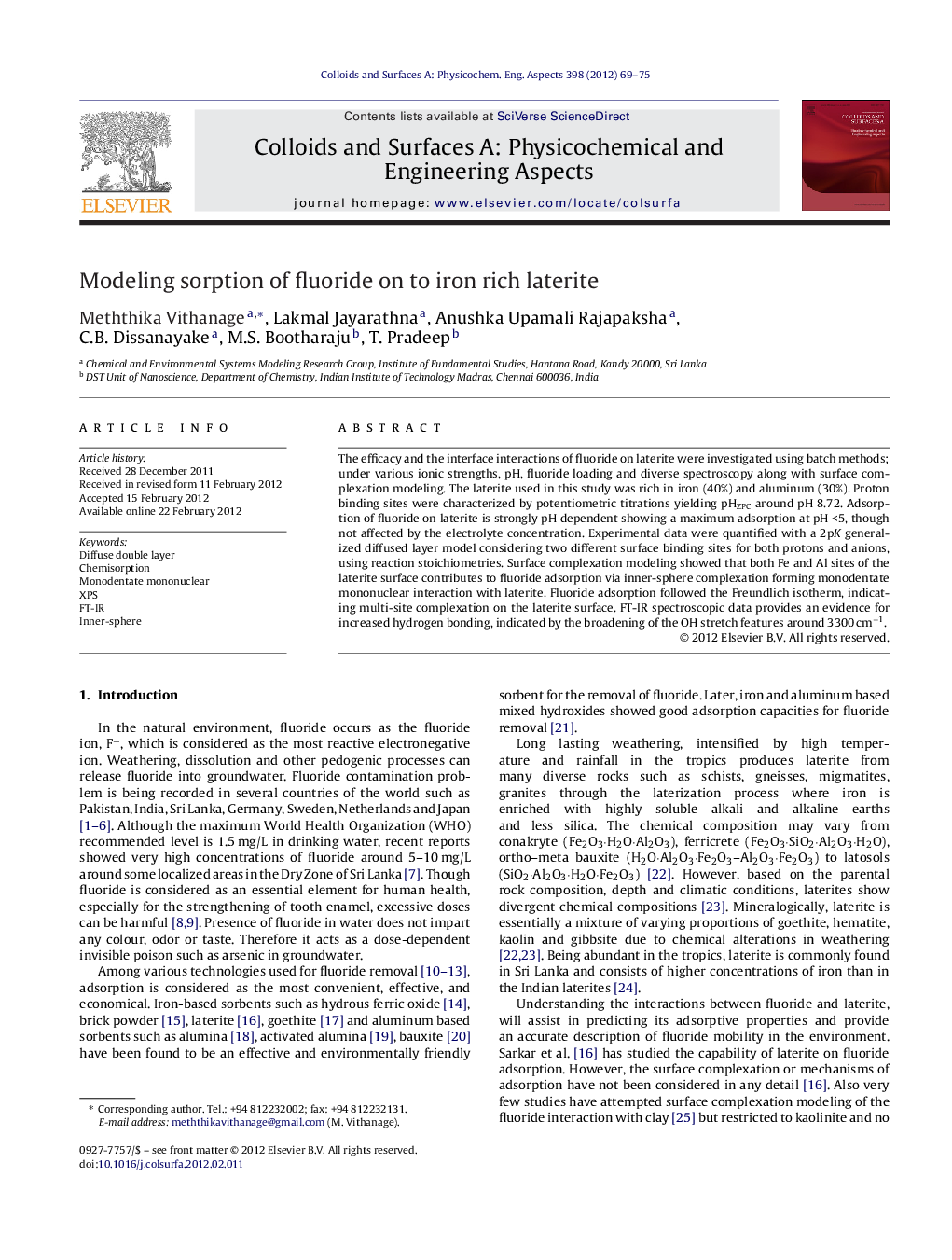| Article ID | Journal | Published Year | Pages | File Type |
|---|---|---|---|---|
| 594365 | Colloids and Surfaces A: Physicochemical and Engineering Aspects | 2012 | 7 Pages |
The efficacy and the interface interactions of fluoride on laterite were investigated using batch methods; under various ionic strengths, pH, fluoride loading and diverse spectroscopy along with surface complexation modeling. The laterite used in this study was rich in iron (40%) and aluminum (30%). Proton binding sites were characterized by potentiometric titrations yielding pHZPC around pH 8.72. Adsorption of fluoride on laterite is strongly pH dependent showing a maximum adsorption at pH <5, though not affected by the electrolyte concentration. Experimental data were quantified with a 2pK generalized diffused layer model considering two different surface binding sites for both protons and anions, using reaction stoichiometries. Surface complexation modeling showed that both Fe and Al sites of the laterite surface contributes to fluoride adsorption via inner-sphere complexation forming monodentate mononuclear interaction with laterite. Fluoride adsorption followed the Freundlich isotherm, indicating multi-site complexation on the laterite surface. FT-IR spectroscopic data provides an evidence for increased hydrogen bonding, indicated by the broadening of the OH stretch features around 3300 cm−1.
Graphical abstractFigure optionsDownload full-size imageDownload as PowerPoint slideHighlights► Surface complexation modeling for F on natural material conducted for first time. ► Effect of pH, ionic strength and loading of F− on iron rich laterite was studied. ► Dual site diffuse double layer modeling with XPS, SEM and FT-IR carried out. ► High affinity of F− observed on AlOH sites via monodentate mononuclear interaction.
